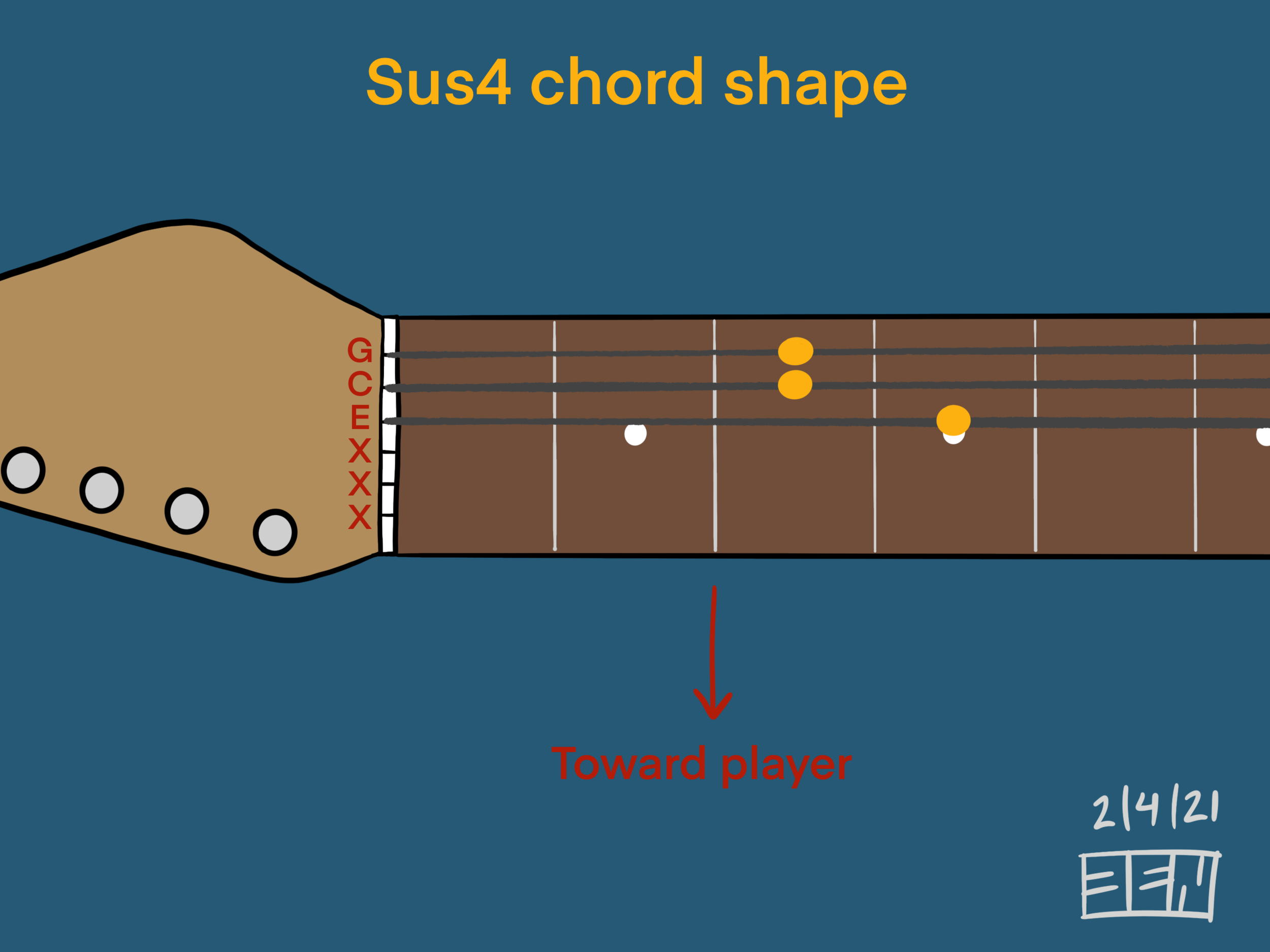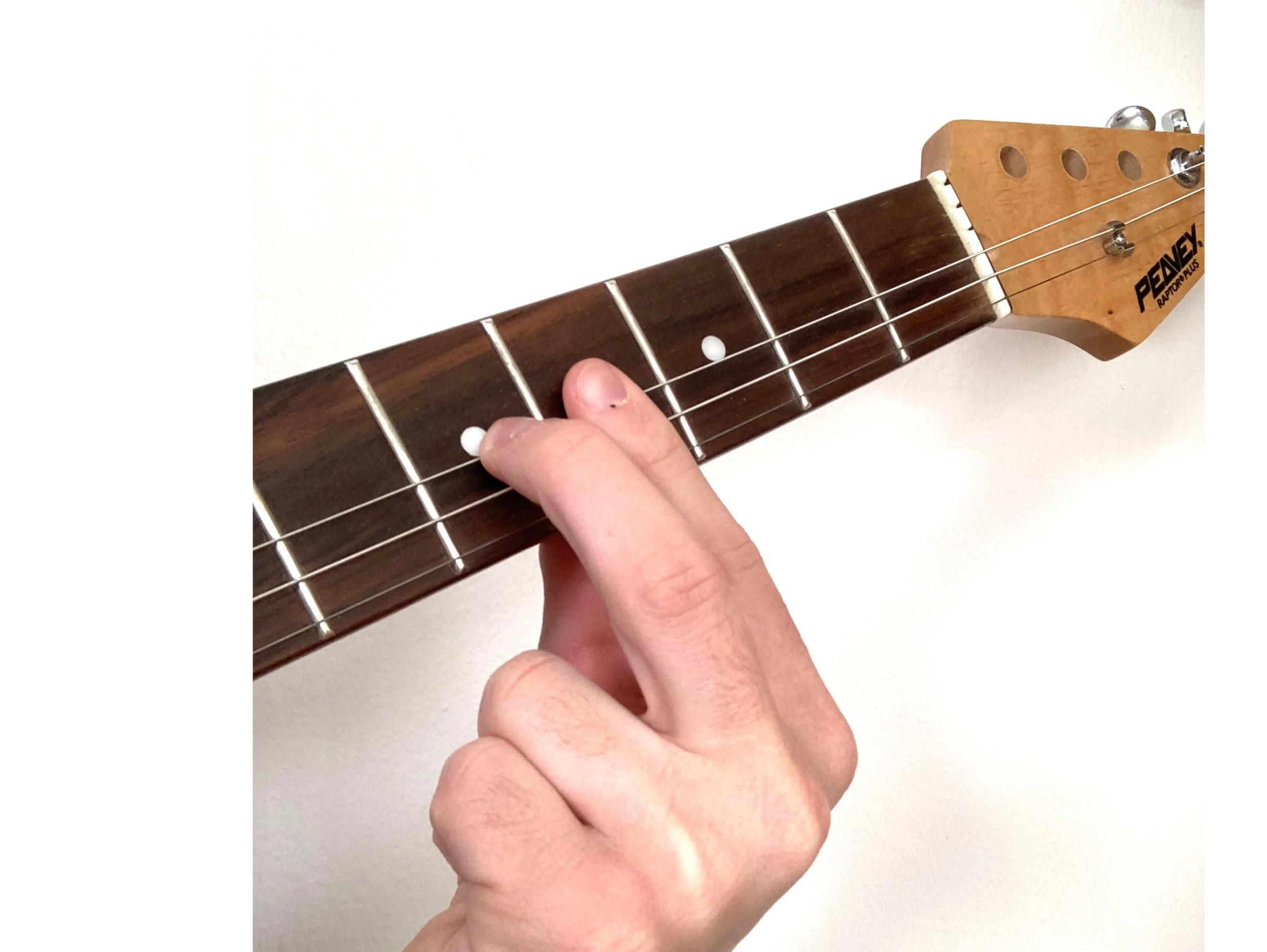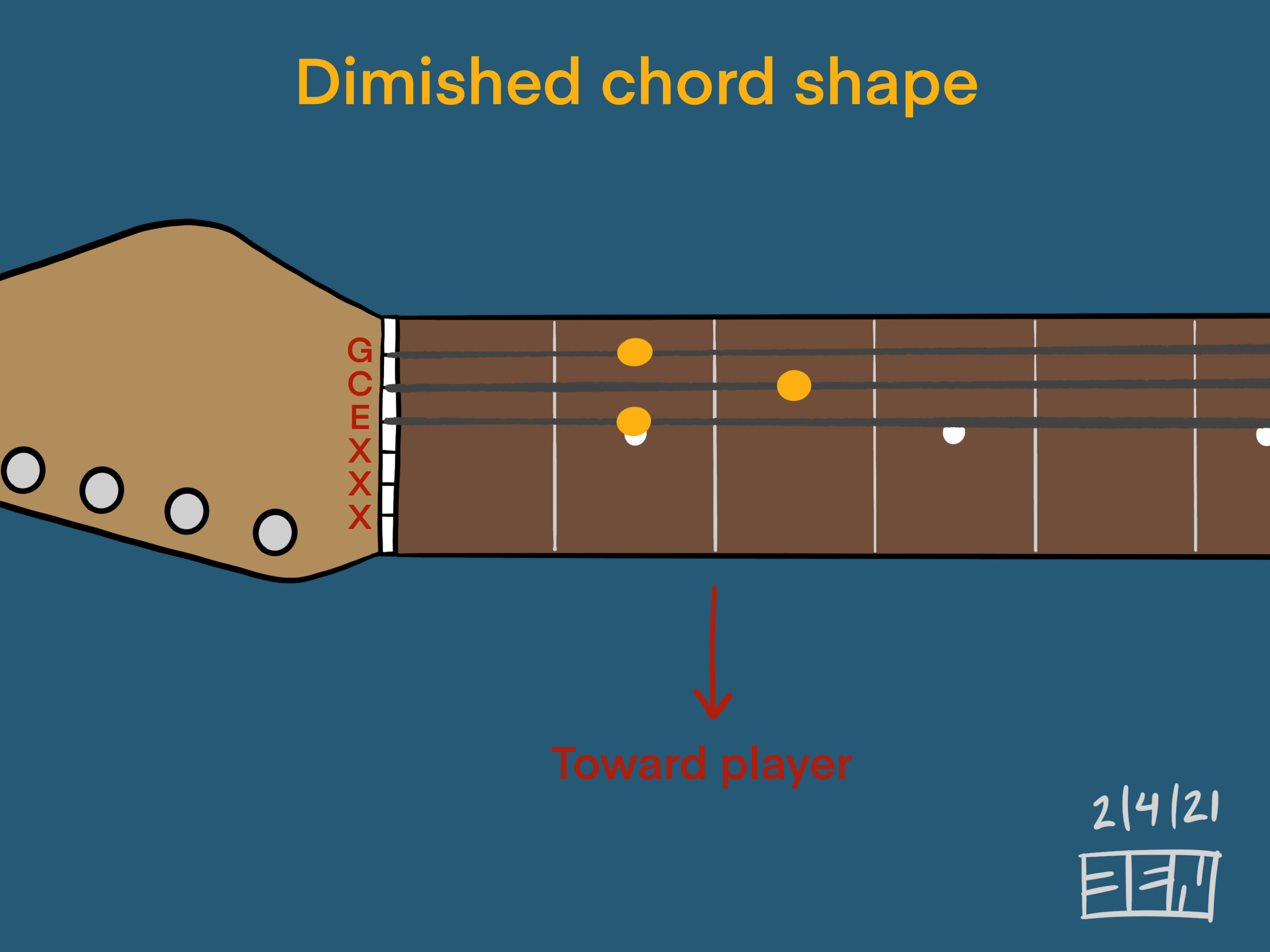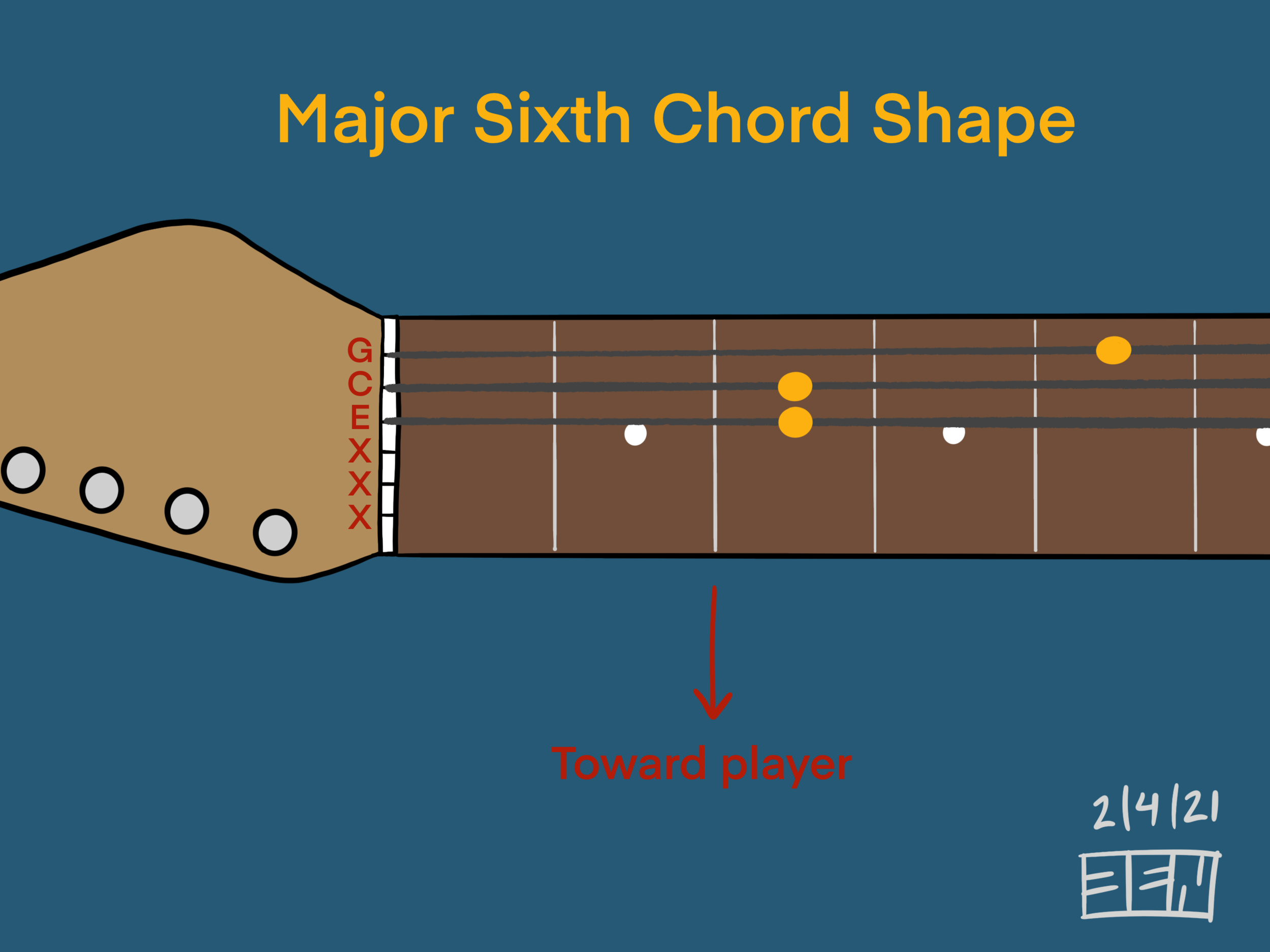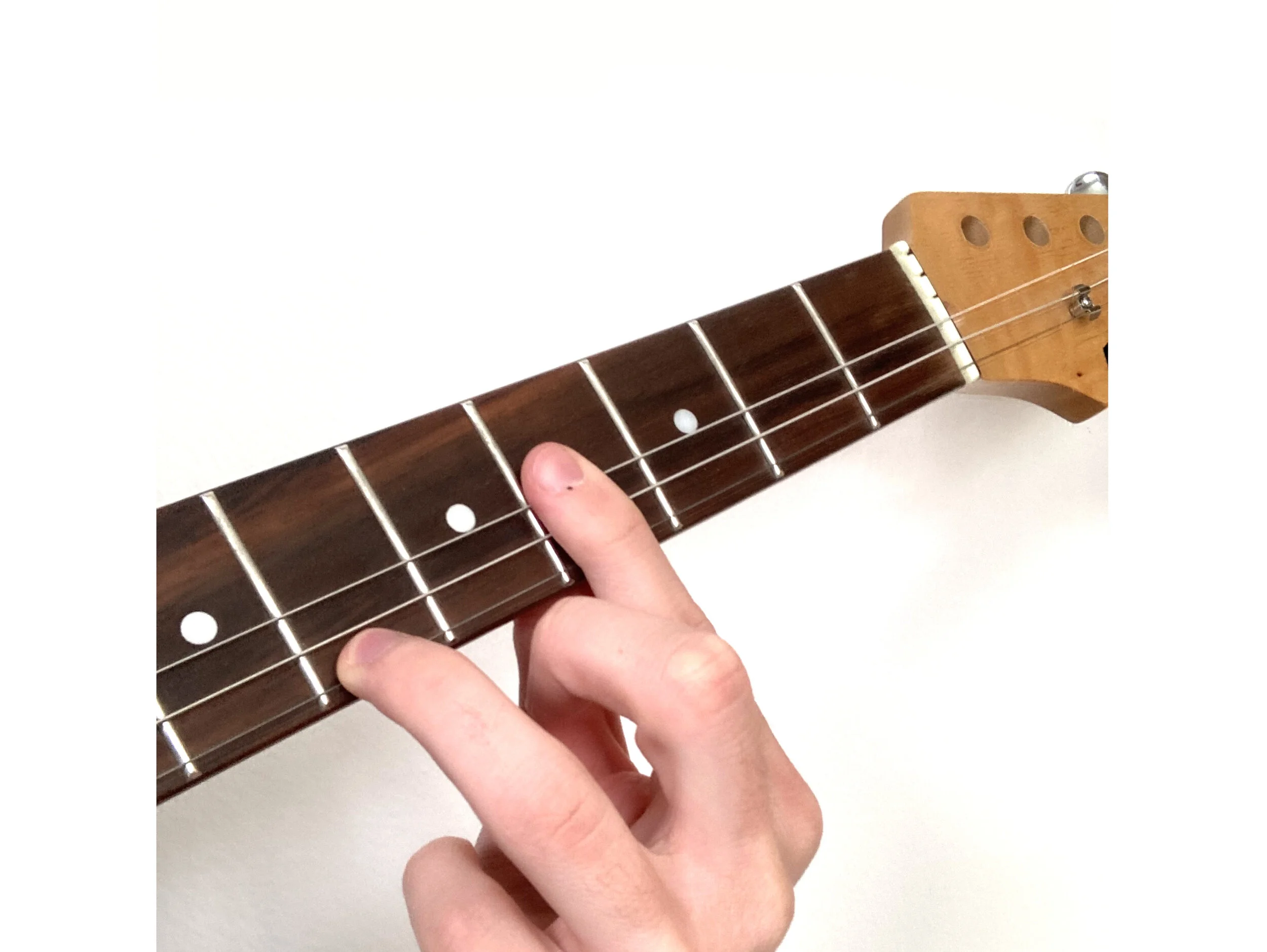Trinitar
Reinventing a classic instrument to make it more accessible to learn and play.
Personal Project - Fall 2017, Spring 2020, Ongoing Development
Purpose.
I have been playing drums since I was 9 years old. I love the drums, but they are difficult to transport, take a long time to set up and tear down, and only have one volume: LOUD. I was searching for an instrument that I could practice quietly, transport easily, and was simple enough to learn in a week but still had the capacity for complex music.
In the Fall of 2017, I decided to make my own.
History.
Throughout the history of music, there have been very complex instruments (say, violins and harps) and very simple instruments (like the recorder and spoons). Simple instruments tend be associated with folk music, and are designed to be accessible to people from all walks of life.
Some examples of this are the cigar box guitar and mountain dulcimer. The cigar box guitar is a three-string instrument made from a cigar box and some wood slats. They were popular in the American South for playing the blues, especially around the Great Depression. The mountain dulcimer originated in the 1800’s from immigrants the American Appalachian region. The mountain dulcimer also sports three strings, and is usually played in the lap.
In the 90’s, Seattle punk band the Presidents of the United States of America (yes, that is their name) performed with a three-stringed guitar. They called it a “guitbass,” and it was prevalent on all their recordings. The band found considerable success in the 90’s alternative scene, even topping the US Alternative charts with their song “Lump.”
More recently, a company known as Loog started selling three-string guitars in 2011, with the aim of getting children excited about learning music.
So, why do all of these instruments have only three strings?




Clockwise from top left: Mountain dulcimer, the Presidents of the United States of America (the band), Cigar Box Banjo, Loog Guitar
Theory.
Songs are made up of chords, and chords are made up of notes. A minimum of two distinct notes are required to make a chord, but most chords have at least three. Guitar box guitars, mountain dulcimers, and the guitbass - though they all have three strings - only have two distinct notes. They are usually tuned to notes A-E-A (low to high) or G-D-G (low to high). The note combinations form the chords A5 and G5, respectively. These types of chords are known as “power chords” and are effectively major chords. Major chords make up the majority of most popular music songs, but it is still helpful to be able to play other chord types. The tunings mentioned above don’t easily allow for minor chords or anything more complicated to be played. However, these types of tunings do allow you to play a simple chord with only one finger across one fret.
For my instrument, I developed a tuning where the strings are tuned to C-E-G (low to high). This note combination forms a C major chord. However, with my tuning, the C-string (the lowest one) is in the middle, and the E-string (the middle-pitched one) is “on top,” or closest to the player. So, when the player uses one finger across one fret, they will play a major chord. However, when they put a finger across a fret one lower than the desired chord, and cover the C-string and G-string of the desired chord fret (but not the string closest to the player!), then a minor chord is played. In this way, only two fingers are required to play major and minor chords - the two most-used chords.
In fact, with my innovative tuning system, only two fingers are required to play six different types of chords. With these six different chords, the player can play almost any song! Other, more complex chords can be played with only three fingers.
Below are diagrams of the six chords that require only two fingers to play. The yellow circles indicated where the strings must be pressed.
Design Selection.
Guitars are expensive. So, I did some math, and decided that if I wanted to implement my tuning system on a guitar, it would be more cost effective to make my own.
Since I was studying to be a mechanical engineer, and not a luthier, I didn’t really know where to start. I began my process by impulse-buying a guitar neck off of Craigslist. I didn’t know if it was a good neck or not, I just knew that I now had constraints to design around. Sometimes that is exactly what you need.
I decided to model my guitar after the Gibson Explorer, because it has a form factor that is both classic and futuristic, and it is instantly recognizable and eye-catching. After calculating the necessary dimensions to achieve the right scale length (maximum sounding length of the strings) and action height (distance between the strings and the fretboard), I modeled the design using SolidWorks.
Fabrication.
With the help of the on-campus maker space, I used a CNC Router to carve out the body of the guitar, based on my CAD model. The body was machined from a solid blank of basswood. The neck was bolted on using wood screws. My father, inspired by the chaotic creations of Jackson Pollock, splatter-painted the body with the colors of my university, the Rochester Institute of Technology, ensuring my guitar would always turn heads when I played it.
I had almost no knowledge of electronics at the time, and opted to use a pre-wired pick-up type that is normally used to add after-market amplification to acoustic guitars. (In fact, I had used the pick-up previously in an earlier project to make a bass guitar out of an oar, but that’s a story for another day.) The pick-up had a permanent output cable attached to it. This meant that my guitar would always wear its output cable like a tail. There is a semi-circular hole in the back of the body to allow the cable to escape without being in the way of the player.
Since the body is a solid piece of basswood, the overall guitar is surprisingly heavy. To remedy this in future revisions, I would machine recesses in the back to remove weight. Additionally, most guitars have necks mounted at an angle such that the neck slopes slightly away from the front of the body. My guitar doesn’t have this, and it cause the action to be slightly high. In future revisions, I would machine the body such that the neck can be attached at an angle. Or better yet, make it so the angle is adjustable!
In the Spring of 2020, I set set about modifying another guitar I had purchased from a friend. While cleaning the electronics under the pickguard, I was aghast to find that the gorgeous sunburst stain finish was mostly covered up by the opaque pickguard. I purchased some plexiglass and used a Dremel and band saw to route out a translucent copy of the pickguard. Now the sunburst would be totally visible, and the internal wiring would be visible, too. I finished off the look with clear tone and volume knobs, and a new selector switch tip.
Final Deliverables.
Takeaways.
The splatter guitar was my first serious personal design project. Above all it taught me to be resourceful. I had to source all the parts myself. I even had to specially order the wood blank to fit my desired form (thank you to Keim Lumber Co. for their generosity!). Since plans to build an Explorer-shaped guitar weren’t widely available online, I had to develop my own system of measurements and calculations. Though I was highly inexperienced when I initiated this project, the concept has quite literally changed my life and I have played my guitar every week - if not most days - since I fabricated it.
I have been playing music using my trinitar configuration for almost four years, now. In that time I have impressed many people who felt like they didn’t have the talent to play music. I used my homemade trinitar (the splattered one) to record my debut EP Hostile Hostel. Despite its simplicity, it has a very pure tone and is comfortable to play. And now, it has been quite literally heard around the world.
I hope that making this website will elevate my tuning system so it can reach a wider audience. I would like to show the world that you don’t have to be a born virtuoso to make beautiful music. With my trinitar system, you can competently make music while you are learning, not after you have learned enough.
Sources.
“History” pictures, in order of above caption:
http://bluesonline.weebly.com/weird-instrument-dulcimer.html
https://www.kiro7.com/news/local/presidents-of-the-united-states-of-america-band-behind-lump-and-peaches-announce-retirement/467869688/
https://www.samash.com/loog-guitars-loog-mini-guitar-lgmixxxxx-p
https://www.gear4music.at/en/Guitar-and-Bass/Nineboys-Cigar-Box-Guitar/147F
For more reading on the subjects mentioned in the “History” section, check out some of the following:
Cigar Box Guitars:
https://www.thaliacapos.com/blogs/blog/cigar-box-guitars-the-history-of-a-folk-instrument-phenomenon
Mountain dulcimer:
https://www.bearmeadow.com/smi/histof.htm
The Presidents of the United States of America (band)
https://www.allmusic.com/artist/the-presidents-of-the-united-states-of-america-mn0000414889/biography
Loog Guitars
https://loogguitars.com/








